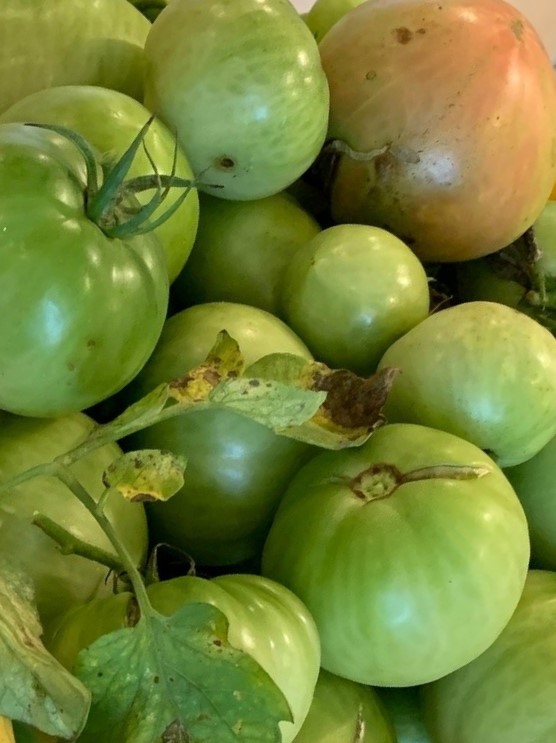 Pre-Frost Tomato Harvest
Pre-Frost Tomato Harvest
Autumn is upon us, and the year's first freeze looms. Tender summer crops like tomatoes, peppers, cucumber, and sweet potatoes are ready to take their final bow of 2023. However, the harvest output of these plants does not yet have to be completely done. Peppers, cucumbers, and sweet potatoes can be harvested at nearly any growth stage. And tomatoes, if harvested carefully, can be picked while still green and ripen gradually for you.
The technical name of the tomato growth stage you are looking for is called the “mature green stage.” How do you know if the crop has reached this point? There will be an off-white star on the underside of the fruits. So long as this marker is there, your fruit should be able to be brought to a ripened state –indoors and away from damaging frosts.
Left to ripen, the tomatoes should be placed in cardboard trays, preferably with layers of newspaper between them. Both components serve the purpose of wicking away moisture that could introduce mold or rot. With those hindrances in mind, it should only be non-damaged, crack-free fruit kept for ripening, as leaking juices can quickly lead to a bug-and-pathogen-contaminated harvest.
Store your harvested tomatoes in a cool, dark area around 50 degrees Fahrenheit for the best flavor development and to prolong ripening. That will last from 1 to 2 months. You will also want well-ventilated storage to move the ethylene gas emitting from the fruit around. Ethylene is a plant hormone that stimulates ripening and, when stored close together, will cause tomatoes to ripen simultaneously unless the gas is dispersed.
If your tomatoes don’t happen to have the ‘white star of maturation’ that beacon their ripening, that does not mean you must leave them on the vine. Green tomatoes are a tart, acidic food with numerous culinary uses, including salads, salsas, and breads. While so tart that they are typically cooked or fried, the fruits can be served or preserved in various ways. Always be sure, however, to follow tested and reliable recipes when canning.
Given the unpredictability of fall weather, there may also be the option of protecting your plants from one frost to enjoy several more weeks of warmer weather and vegetable production. This is a component of “season extension” in the world of vegetable growers, and it can be as simple as a blanket or overturned bucket on top of a plant and as complex as an entire low tunnel constructed of PVC and polyethylene film. The key here is simply preventing contact between the plants, the briefly brisk air, and the edges of the material covering it.
Tomatoes are a passion for many, with numerous hours devoted annually to their well-being. And, with a little forethought, care, and babying, you can stretch and extend every bit of production out of them while they’re still alive to do so.
